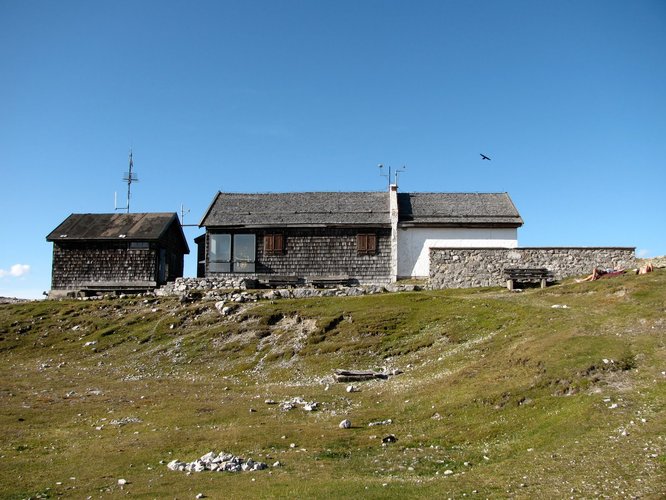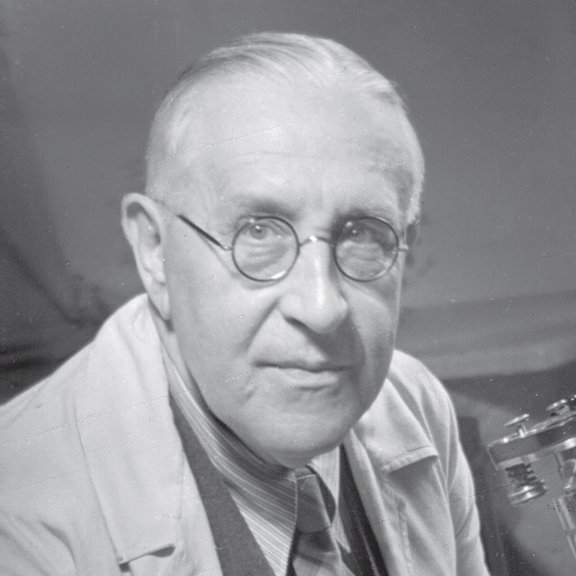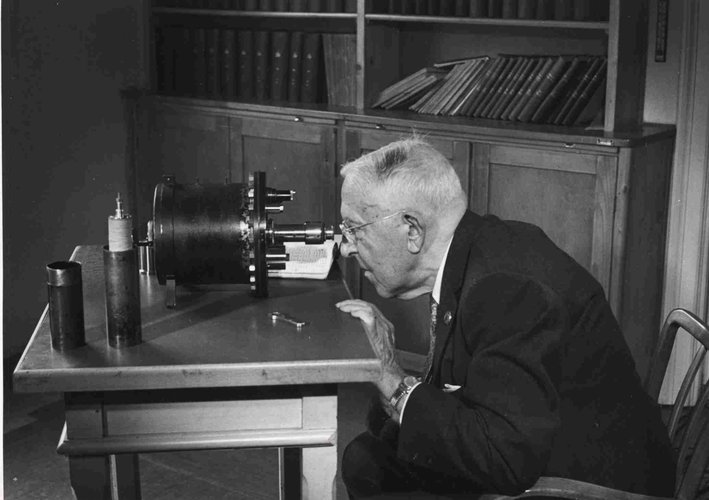Visit the research station with exhibition in our
Observatory
Scientific history was written in a former construction shack of the Nordkettenbahnen: In 1931, Professor Victor Franz Hess (1883-1964) founded the world’s first high-altitude cosmic ray research laboratory on the Hafelekar. With its university and the Nordkettenbahn, Innsbruck was the ideal place.
In 1912, in a series of daring ascents in a balloon, Hess had already discovered cosmic rays. He then spent a long time searching for a high-mountain location that was suitable for continuously recording the high-energy rays. The Hafelekar was just what he was looking for.
In the 1930s, the hut was a hive of activity. After Hess received the Nobel Prize for Physics in 1936, the world’s foremost scientists of the time visited the observatory.
Today, the observatory is recognised as a historic site by the European Physical Society.
Rays from outer space
Since the 1930s, the research station has housed instruments used by its founder Victor Franz Hess, who won the Nobel Prize in 1936, to study cosmic rays.
The facility also helped other scientists make groundbreaking discoveries. On photographic plates exposed at the observatory, Marietta Blau and Hertha Wambacher became the first to observe nuclear disintegration caused by cosmic rays in 1937.
In the 1960s and 1970s, a neutron monitor and muon detectors were installed. This enabled the researchers to individually measure two types of particles in cosmic rays and make some important discoveries. Rudolf Steinmaurer, a colleague of Victor Franz Hess, played a leading role.
In 2009, Olaf Reimer’s research group, based at the Institute of Astrophysics, began studying high-energy gamma rays. They are produced in interaction with particles of cosmic rays and come from the same – in part still unknown – sources in outer space. The data are no longer from here, however, but from the Fermi Space Telescope or the H.E.S.S. telescopes in Namibia.
Visit the historic observatory on the Hafelekar and learn more about the Nobel Prize winner and discoverer of cosmic rays Victor Franz Hess.

Hafelekar Observatory
- construction on the Hafelekar
- historical guestbook
- observatory, instruments and research in pictures


